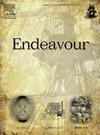Hoops, loops and eyewitness reliability: a history of biologically impossible aquatic monsters
IF 0.5
4区 哲学
Q3 HISTORY & PHILOSOPHY OF SCIENCE
引用次数: 0
Abstract
Here we outline the history of serpentiform aquatic monster reports and images that contain a zoological impossibility: the presence of loops or arches of the body above the water in a vertically flexing animal body. Images of such serpentiform animals have been common ever since the sixteenth century yet the actual proportion of such eyewitness reports, especially at Loch Ness, has until recently been extremely low, far lower than the proportion of hooped imagery in art portraying the Loch Ness Monster. As the biological impossibility of such arched animals is not widely known, yet the images of such monsters both historically and contemporaneously are extremely common, this allows a test of contemporary eyewitness testimony. Few reports mention vertical arches in freshwater or marine contexts. This low proportion suggests cultural background has not influenced the content of aquatic monster reports, in contrast to previous work in the field. This insight supports the contention that the majority of eyewitness reports are actually based on some underlying physical reality, even if not representing an actual encounter with an unknown species.
环,环和目击者的可靠性:生物学上不可能的水生怪物的历史
在这里,我们概述了蛇形水生怪物的报告和图像的历史,这些报告和图像包含了动物学上的不可能:在垂直弯曲的动物身体中,在水中存在环状或拱形的身体。自16世纪以来,这种蛇形动物的形象就很常见,但直到最近,这种目击报告的实际比例,特别是在尼斯湖,一直非常低,远远低于尼斯湖怪物的艺术形象的比例。由于这种弓形动物在生物学上的不可能性并不广为人知,但这种怪物的形象在历史上和当代都非常普遍,这使得对当代目击者证词的检验成为可能。很少有报告提到淡水或海洋环境中的垂直拱形。这一低比例表明文化背景并未影响水生怪物报告的内容,这与该领域以前的工作形成了对比。这一见解支持了这样一种观点,即大多数目击者的报告实际上是基于一些潜在的物理现实,即使没有代表与未知物种的实际遭遇。
本文章由计算机程序翻译,如有差异,请以英文原文为准。
求助全文
约1分钟内获得全文
求助全文
来源期刊

Endeavour
综合性期刊-科学史与科学哲学
CiteScore
1.10
自引率
16.70%
发文量
19
审稿时长
49 days
期刊介绍:
Endeavour, established in 1942, has, over its long and proud history, developed into one of the leading journals in the history and philosophy of science. Endeavour publishes high-quality articles on a wide array of scientific topics from ancient to modern, across all disciplines. It serves as a critical forum for the interdisciplinary exploration and evaluation of natural knowledge and its development throughout history. Each issue contains lavish color and black-and-white illustrations. This makes Endeavour an ideal destination for history and philosophy of science articles with a strong visual component.
Endeavour presents the history and philosophy of science in a clear and accessible manner, ensuring the journal is a valuable tool for historians, philosophers, practicing scientists, and general readers. To enable it to have the broadest coverage possible, Endeavour features four types of articles:
-Research articles are concise, fully referenced, and beautifully illustrated with high quality reproductions of the most important source material.
-In Vivo articles will illustrate the rich and numerous connections between historical and philosophical scholarship and matters of current public interest, and provide rich, readable explanations of important current events from historical and philosophical perspectives.
-Book Reviews and Commentaries provide a picture of the rapidly growing history of science discipline. Written by both established and emerging scholars, our reviews provide a vibrant overview of the latest publications and media in the history and philosophy of science.
-Lost and Found Pieces are playful and creative short essays which focus on objects, theories, tools, and methods that have been significant to science but underappreciated by collective memory.
 求助内容:
求助内容: 应助结果提醒方式:
应助结果提醒方式:


